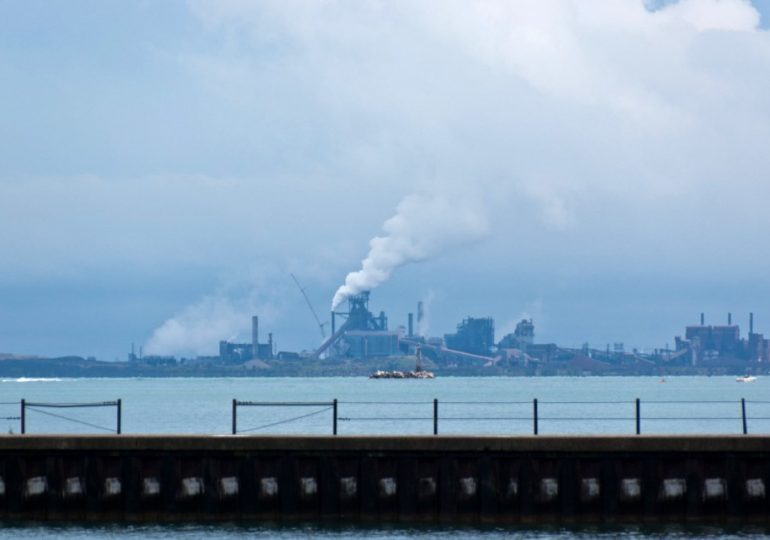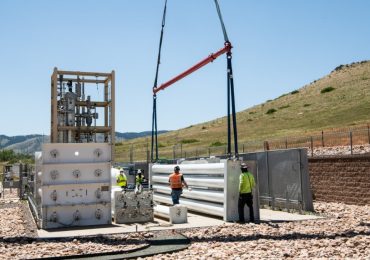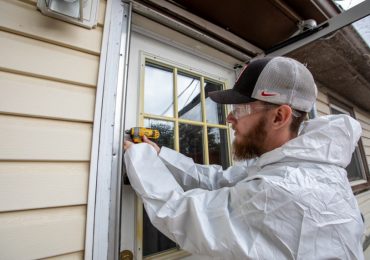The following commentary was written by Hilary Lewis, Steel Director at Industrious Labs, an advocacy organization focused on transforming heavy industry for climate, workers and communities. See our commentary guidelines for more information.
The domestic steel industry and the jobs that come with it have been in sharp decline for decades, disproportionately harming the Midwest and leaving behind the distasteful nickname of the “Rust Belt.” However, new federal funding is bringing a renewed hope of reshoring and reinvesting in American manufacturing and the many industries up and down the supply chain, including steel. While the headline investment in steel is a potential share of the $6.3 billion available for industrial demonstration projects, a critical tax credit for clean hydrogen cannot be overlooked as a potential game changer for the steel industry and steel communities.
The Inflation Reduction Act’s 45V tax credit could provide hundreds of billions of dollars in federal funding, and be used to put the steel industry on the path to reduce climate emissions by over 90 percent. As a result, this historic tax credit could lead to healthier air and economic investment, recasting the Midwest as a global leader in cleaner steelmaking. However, strict safeguards need to be implemented to ensure that only qualified projects receive the credit.
Steel is a fundamental part of our modern lives, responsible for the iconic skyscrapers, bridges, cars, and machinery we use everyday. It is also essential to switch to a clean economy, with recent federal legislation to build out renewables, revamp transmission and reshore domestic manufacturing expected to generate massive demand for steel. Most new steel in the U.S. is made in just over a dozen coal-burning blast furnaces surrounding the Great Lakes. Hydrogen can replace fossil fuels in modern steelmaking technologies to reduce pollution that harms human health and the environment – without sacrificing quality. Direct reduced iron technology can be built or retrofitted to use hydrogen in steel production, but the viability of this pathway relies on clean, affordable, and accessible hydrogen. The 45V hydrogen tax credit is essential to realizing this vision.
Earlier this year, the Treasury Department announced proposed rules for the 45V tax credit that would ensure that only hydrogen made with new, renewable energy would qualify. This is an enormous win for the climate. Creating hydrogen uses a significant amount of energy, and without rules to require new clean energy supply and accurate accounting for this hydrogen production, the process could bring more fossil fuel plants online to meet the spiked demand on the grid. Since green hydrogen is needed for the leading commercial pathway to clean up primary steelmaking, strict tax credit rules will ensure the hydrogen powering potential modern, clean steel plants is actually clean.
However, legacy energy companies are lining up to water down the tax credit proposal. Weak rules would put the green steel boom – and the billions of dollars in investment that come with it – at risk. Moreover, regional analyses from the U.S. show the need to invest in low-carbon steel to maintain Indiana steelmaker’s competitive edge and reverse Pennsylvania’s trending steel job losses. With an estimated 6.7 million tons of annual demand for near-zero emissions steel by 2030 in the U.S. alone, investing in modern, clean steel plants today can revitalize the steel industry and earn a price premium for steelmakers. Countries globally, from Namibia to Sweden, are already constructing green steel plants to cash-in on this opportunity. A robust 45V tax credit will allow industries like steel to bring a highly sought after commodity to market at a standard that meets customer expectations.
We must get the 45V tax credit right to pave the way to decarbonizing steel and other high-priority, high-pollution industries. Transitioning the steel industry alone would require approximately 1.5 million metric tons of hydrogen – a huge potential source of demand for hydrogen companies that take advantage of the credit. Using hydrogen to clean up the steel sector should help drive us forward into a clean energy future, not come at the cost of our health and the climate. Failure to advance strong rules for clean hydrogen risks locking in more fossil fuels, harming communities, jeopardizing jobs, and sending business opportunities abroad.
Commentary: A little-known tax credit could revitalize Midwest steelmaking is an article from Energy News Network, a nonprofit news service covering the clean energy transition. If you would like to support us please make a donation.
Leave a comment









